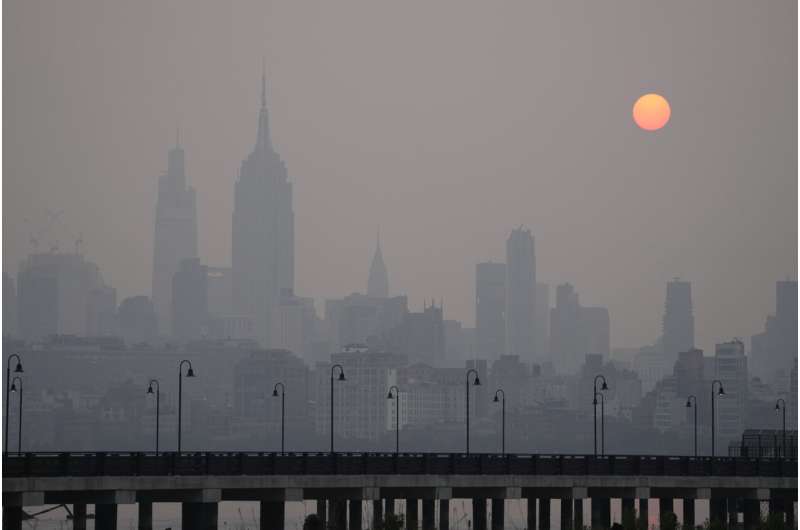This article has been reviewed according to Science X's editorial process and policies. Editors have highlighted the following attributes while ensuring the content's credibility:
fact-checked
reputable news agency
proofread
US haze from Canada fires rare and extreme event: expert

The air pollution swamping the northeast United States this week from smoke spewed by fires in Canada is "exceptionally rare" and "extreme", said Ryan Stauffer, a NASA scientist specializing in air pollution.
This episode should last for at least the next two days, the expert told AFP on Wednesday.
How out of the ordinary is this event?
"In the last 20 or 25 years, the only event that comes even close to what we're seeing in the past few days was a very similar situation on July 7 and 8, 2002.
"And that was... maybe even an eerily similar setup, where there were new wildfires in Quebec, this smoke streams directly into the northeastern of the United States.
"And for many stations in the northeast, that is the top most polluted, in terms of this particular matter, date on record.
"These observations that are coming in yesterday and today are certainly rivaling that July 2002 event. So this is exceptionally rare...It's really just an extreme event."
What made it possible?
"The really unique aspect of this event is that the wildfires that have erupted in Quebec recently, over the past several days, the weather pattern is such that there's a big high-pressure system over central Canada, and there's a big low-pressure system off the coast of the northeast United States.
"And so those two weather systems combined are driving winds out of the north and allowing the smoke from these fires in Quebec to stream directly into the northeast and mid-Atlantic United States."
What type of pollution is it?
"We're most concerned, when we think about smoke from wildfires, with what we call PM 2.5. It stands for particulate matter 2.5, meaning these particles are smaller than 2.5 microns—2.5 micrometers, or millionths of a meter in size. So these particles are much, much smaller than even the width of a human hair. (...)
"These particles, they're so small that when you breathe them in, they don't just irritate your lungs and cause breathing issues. They're actually small enough to enter your bloodstream.
"And so they can cause all sorts of health issues, things like increased stress on the heart, heart attacks, stroke, because they're just essentially traveling through your bloodstream throughout all the organs of your body."
"We know that whenever you observe pollution at code red levels, we can expect hospitalizations and hospitals visits to increase.
"It obviously affects those with preexisting conditions. Those who are sensitive to air pollution, children, elderly, it affects them the most."
© 2023 AFP





















